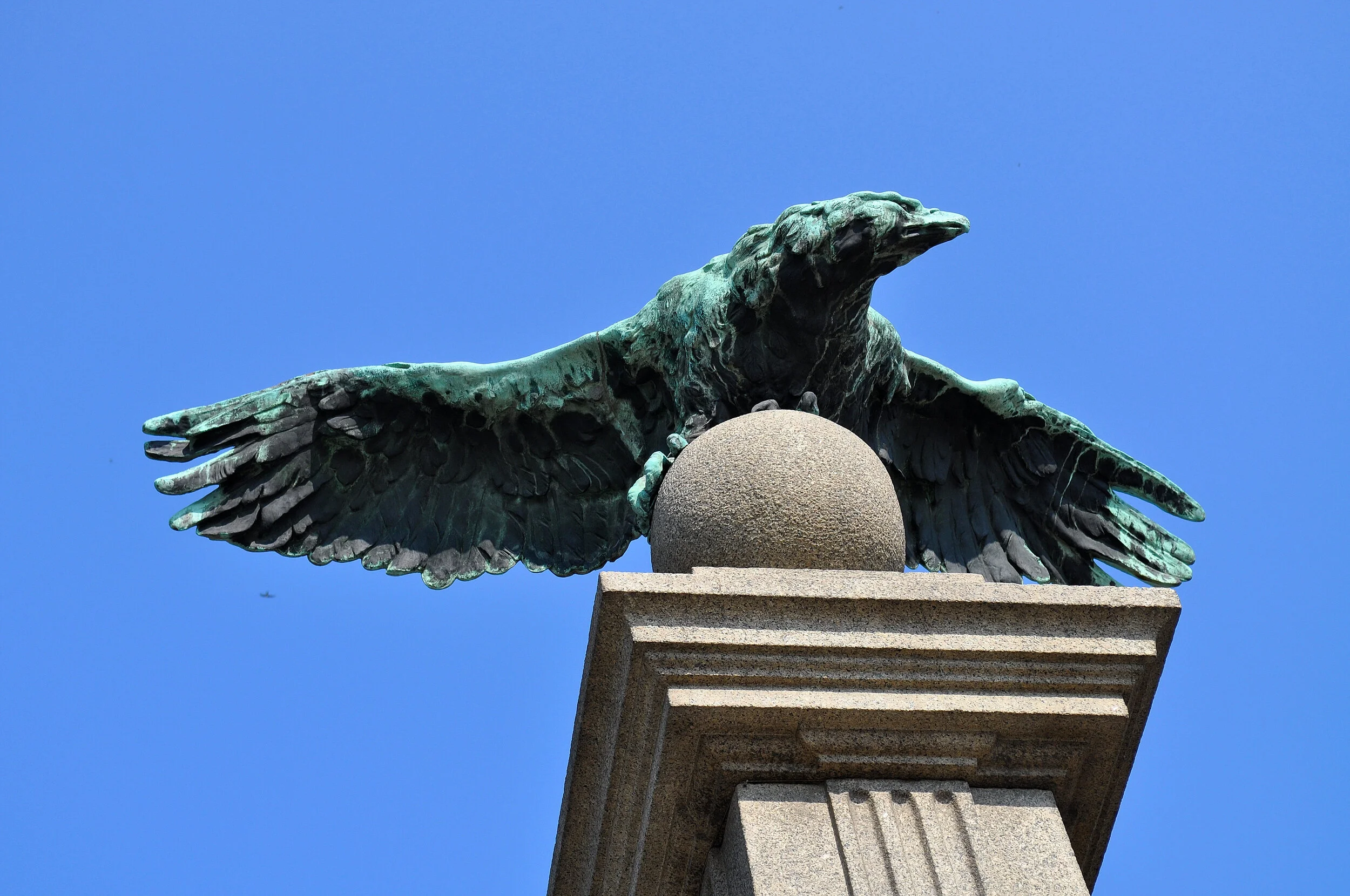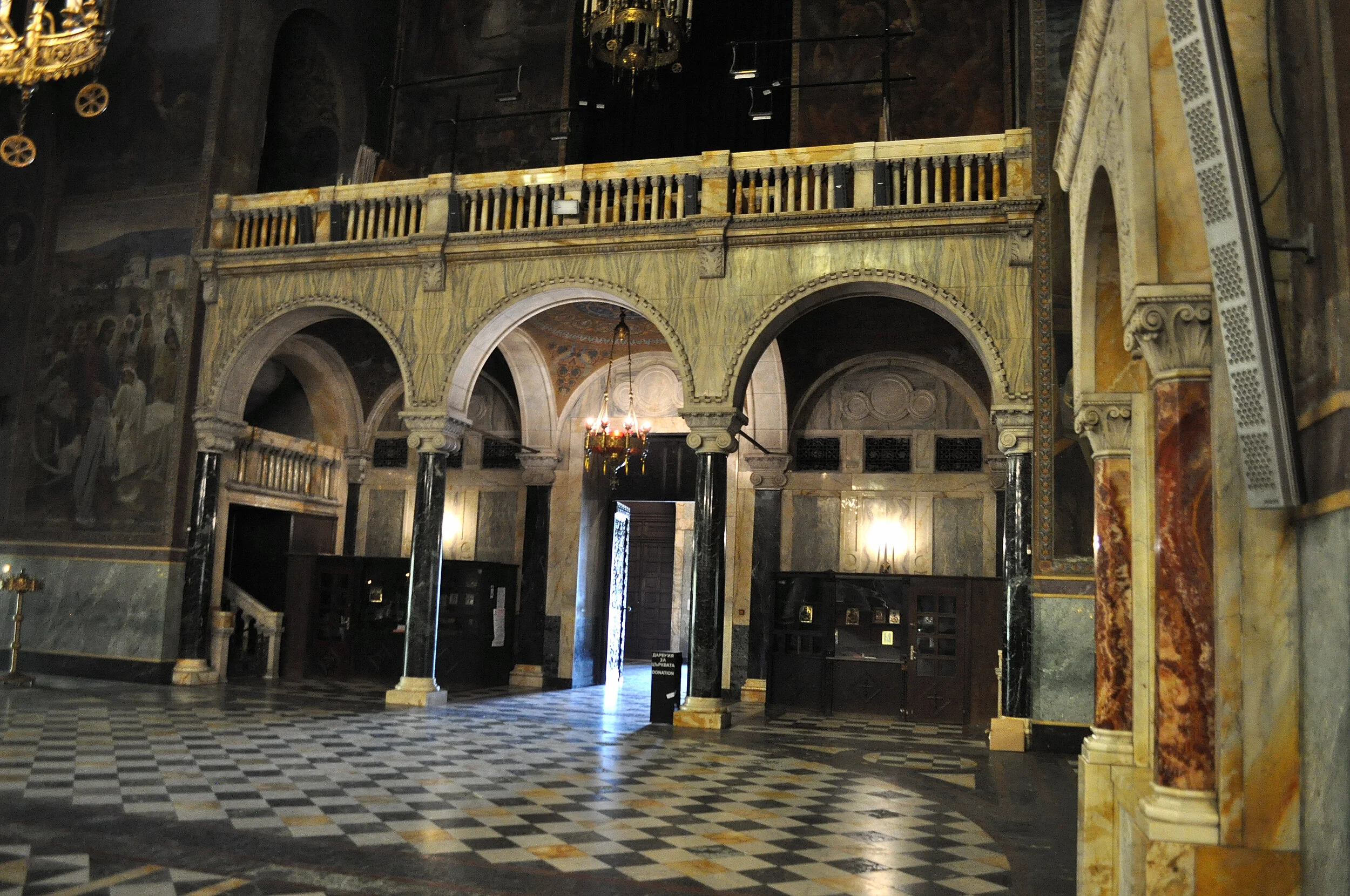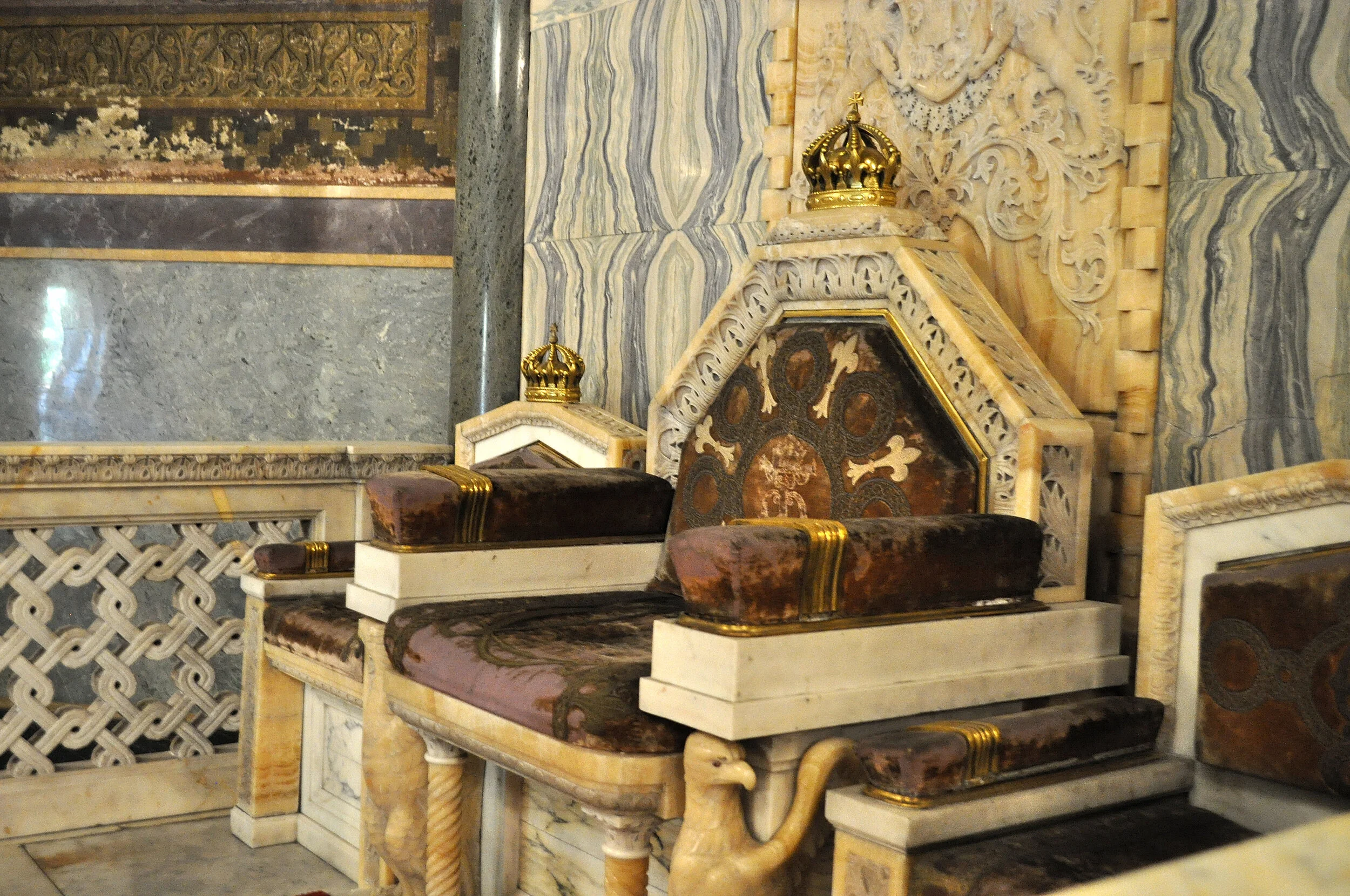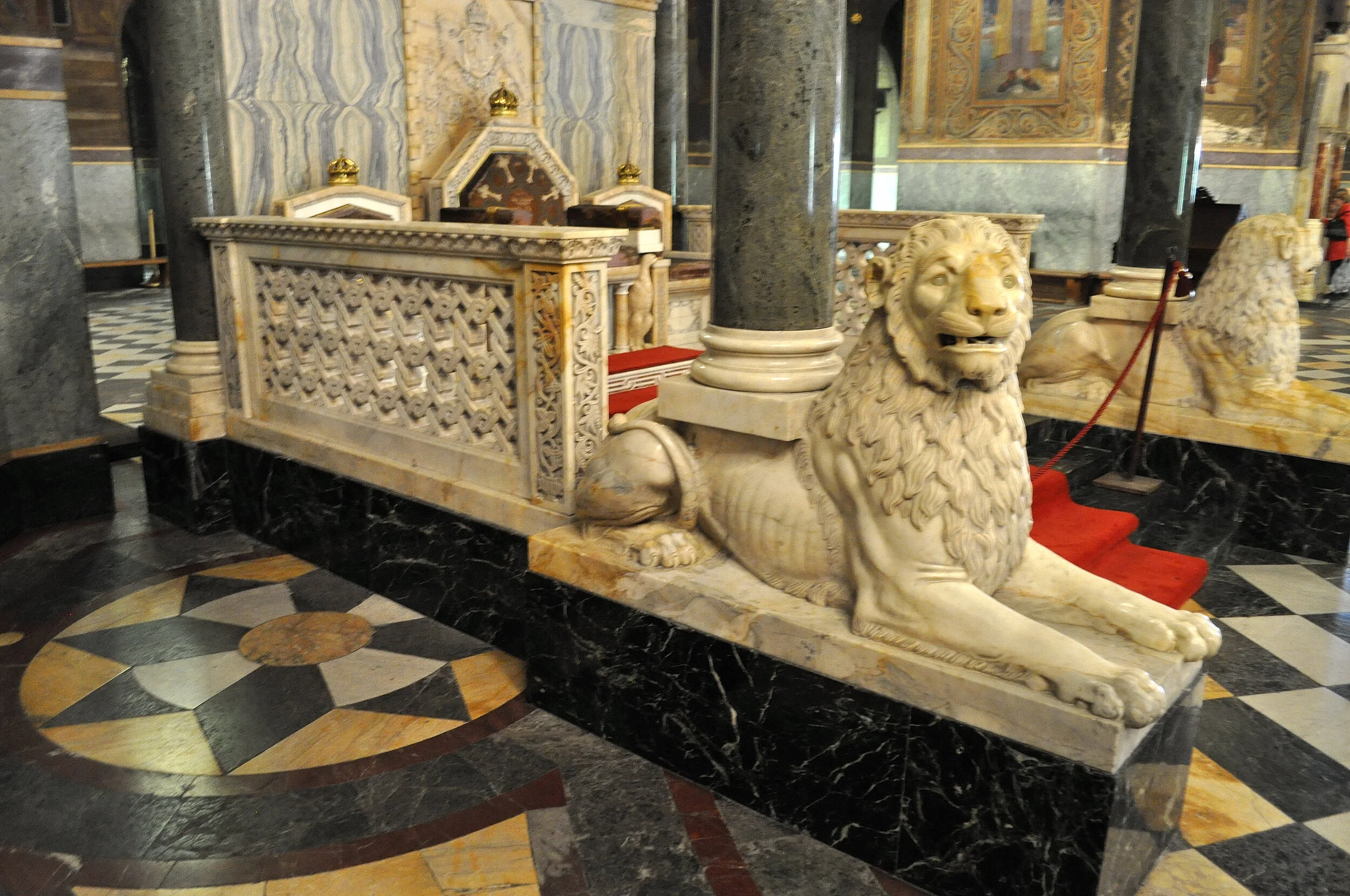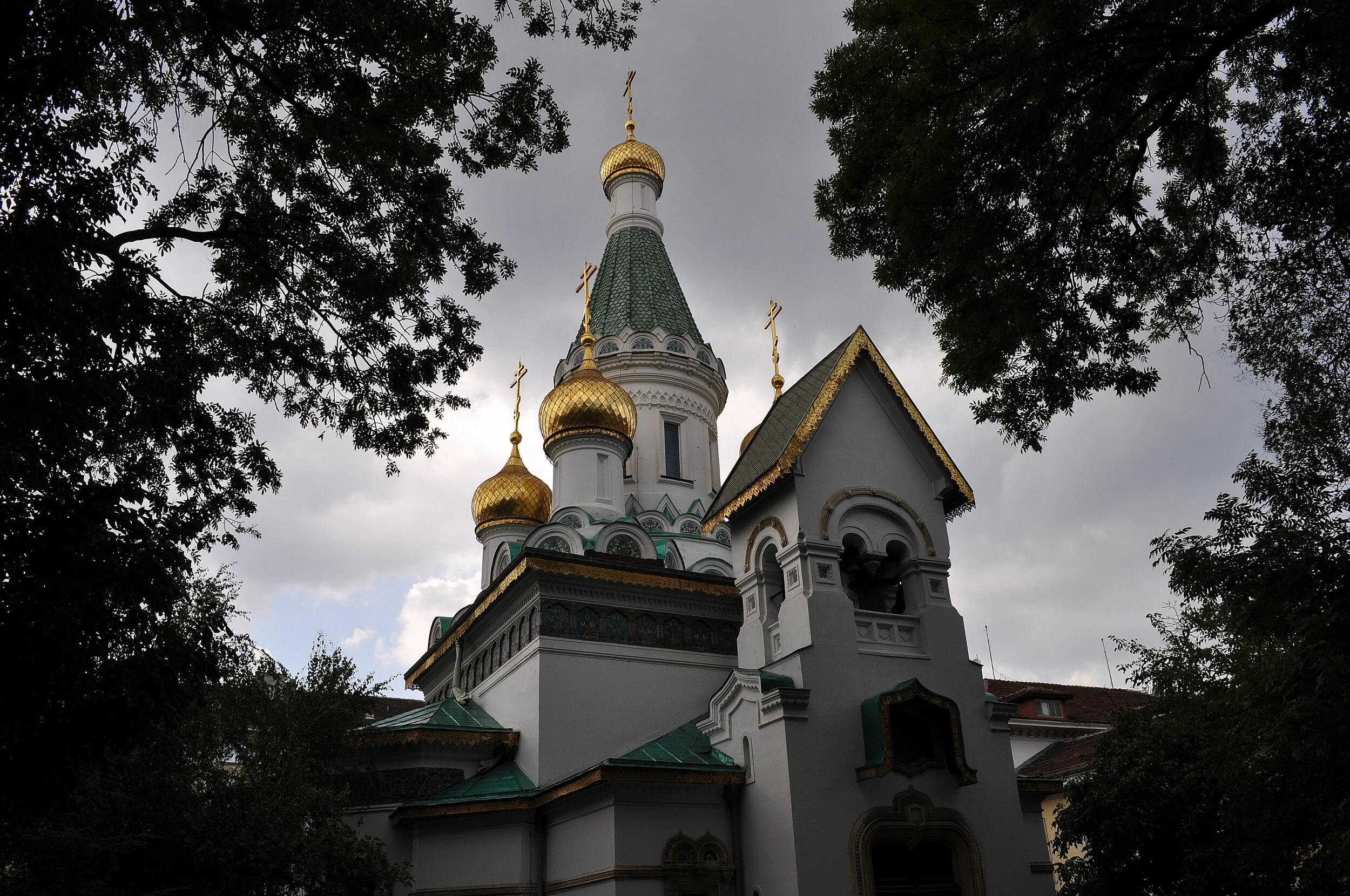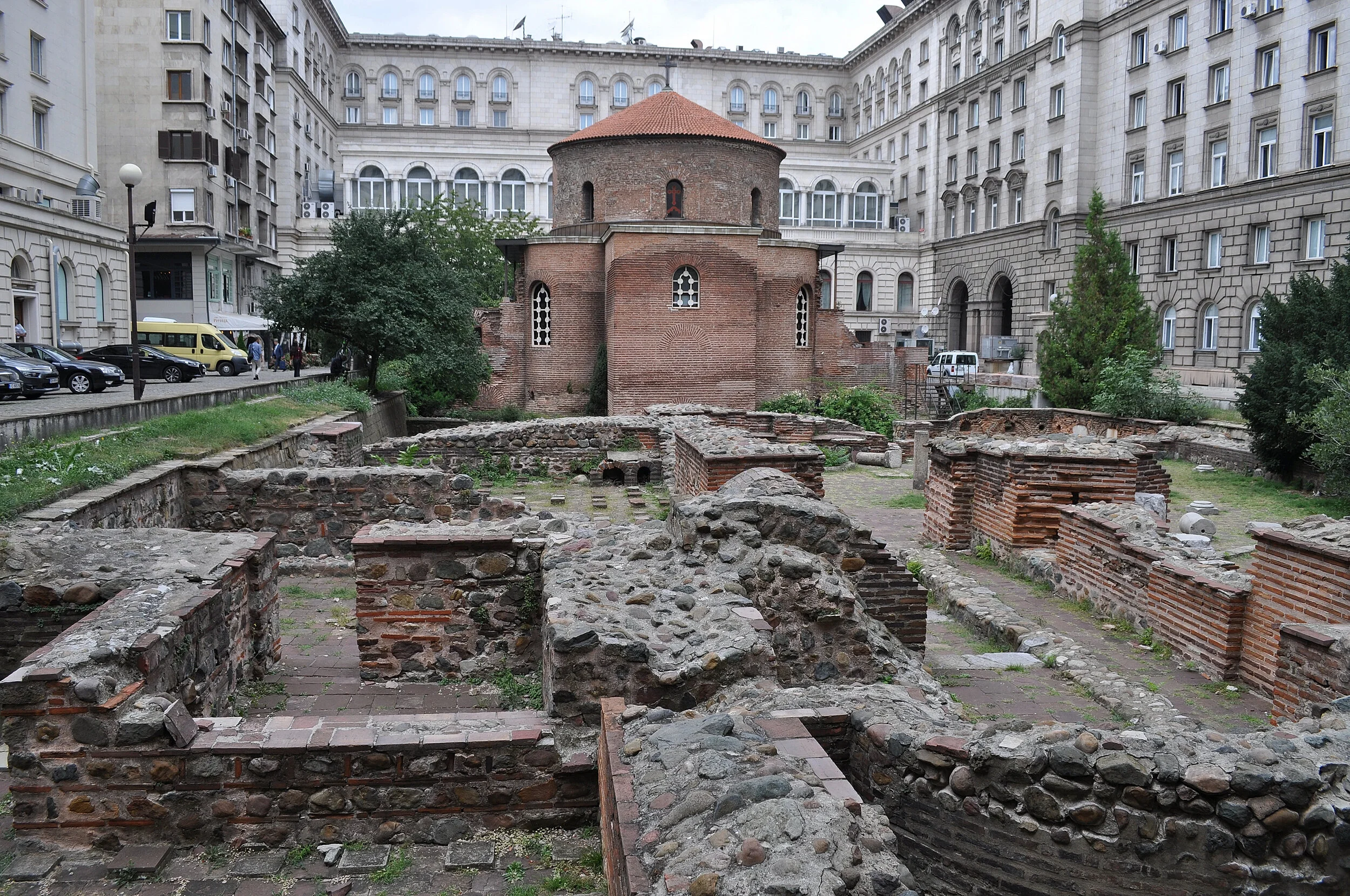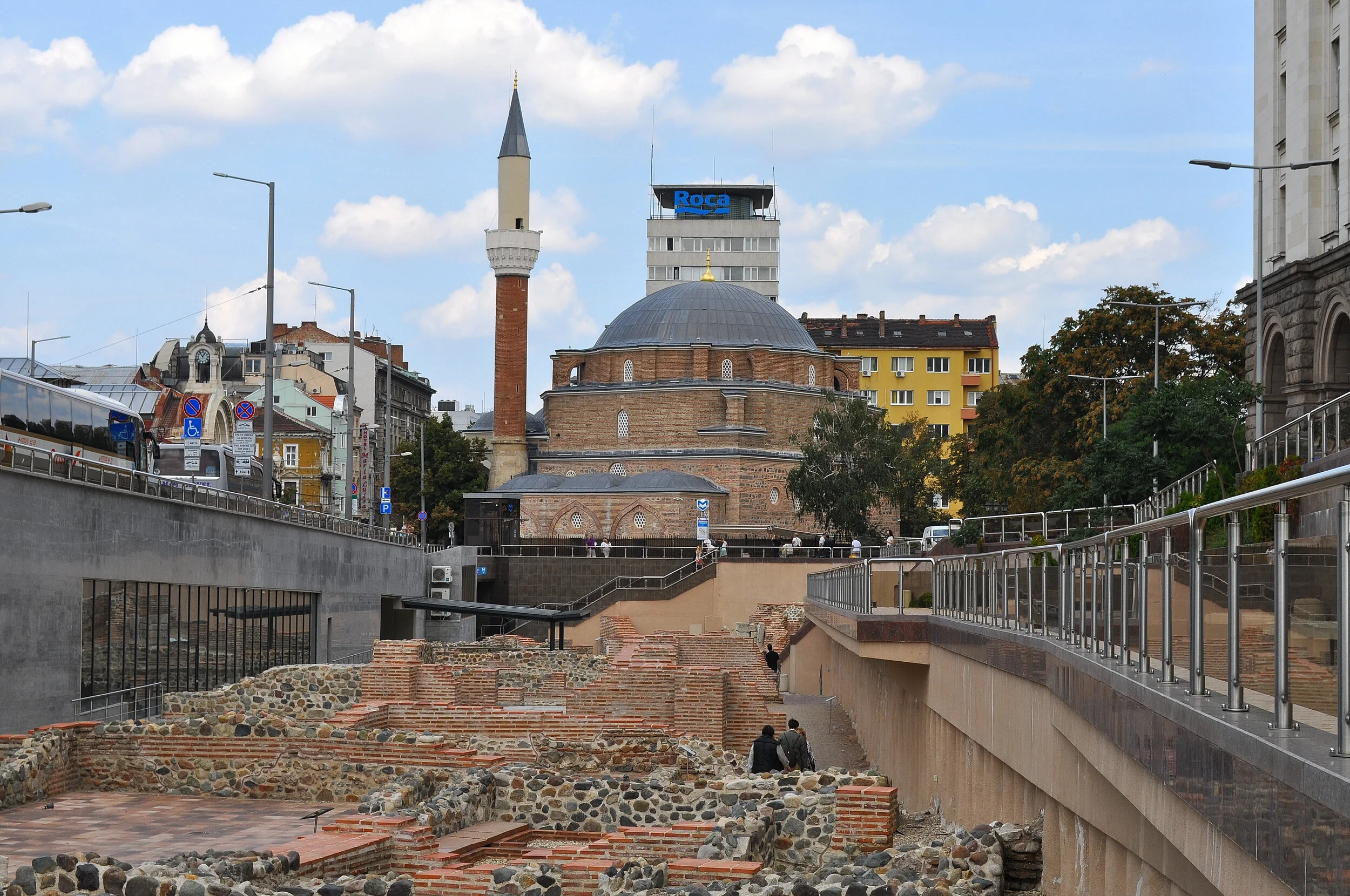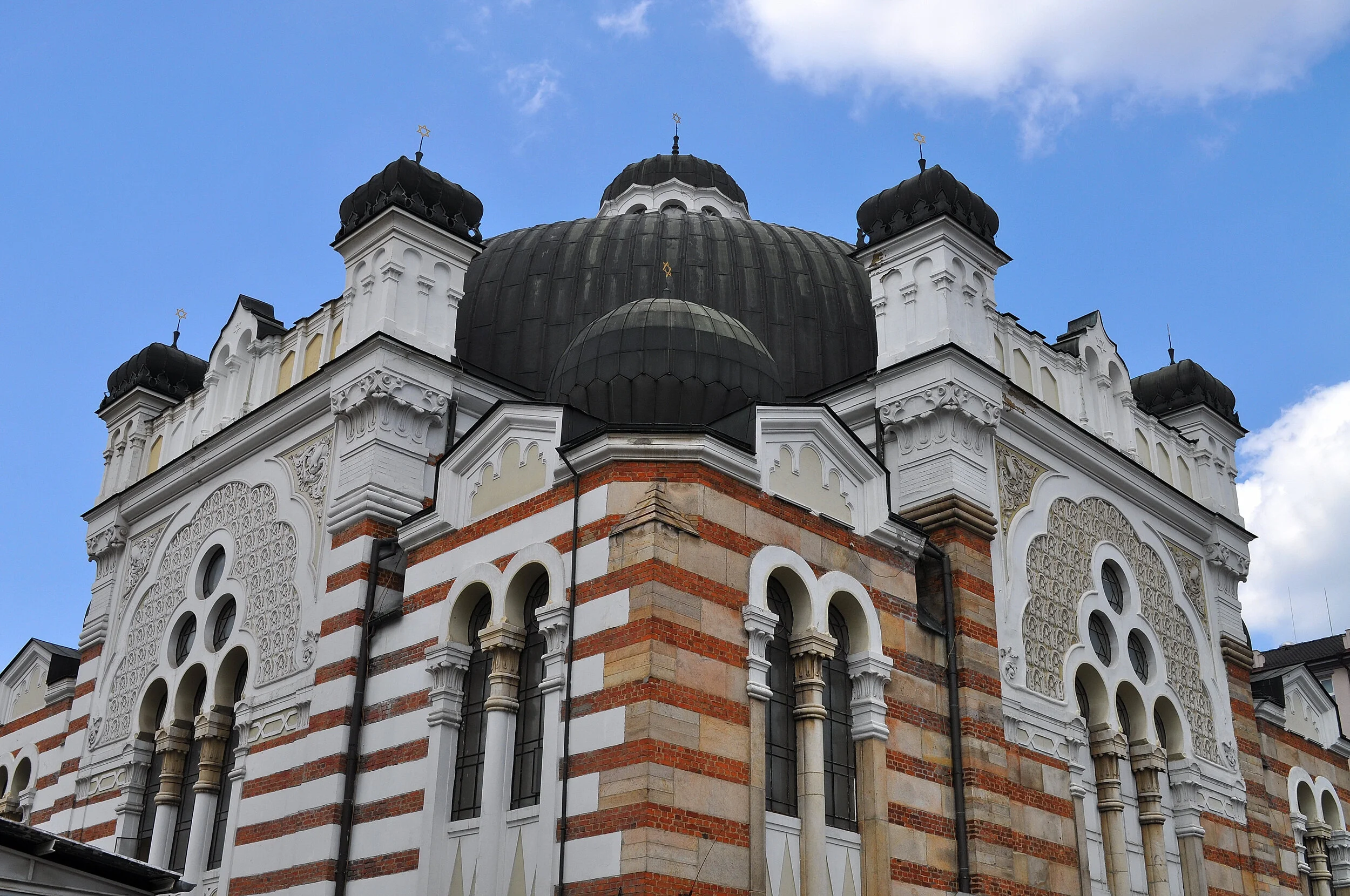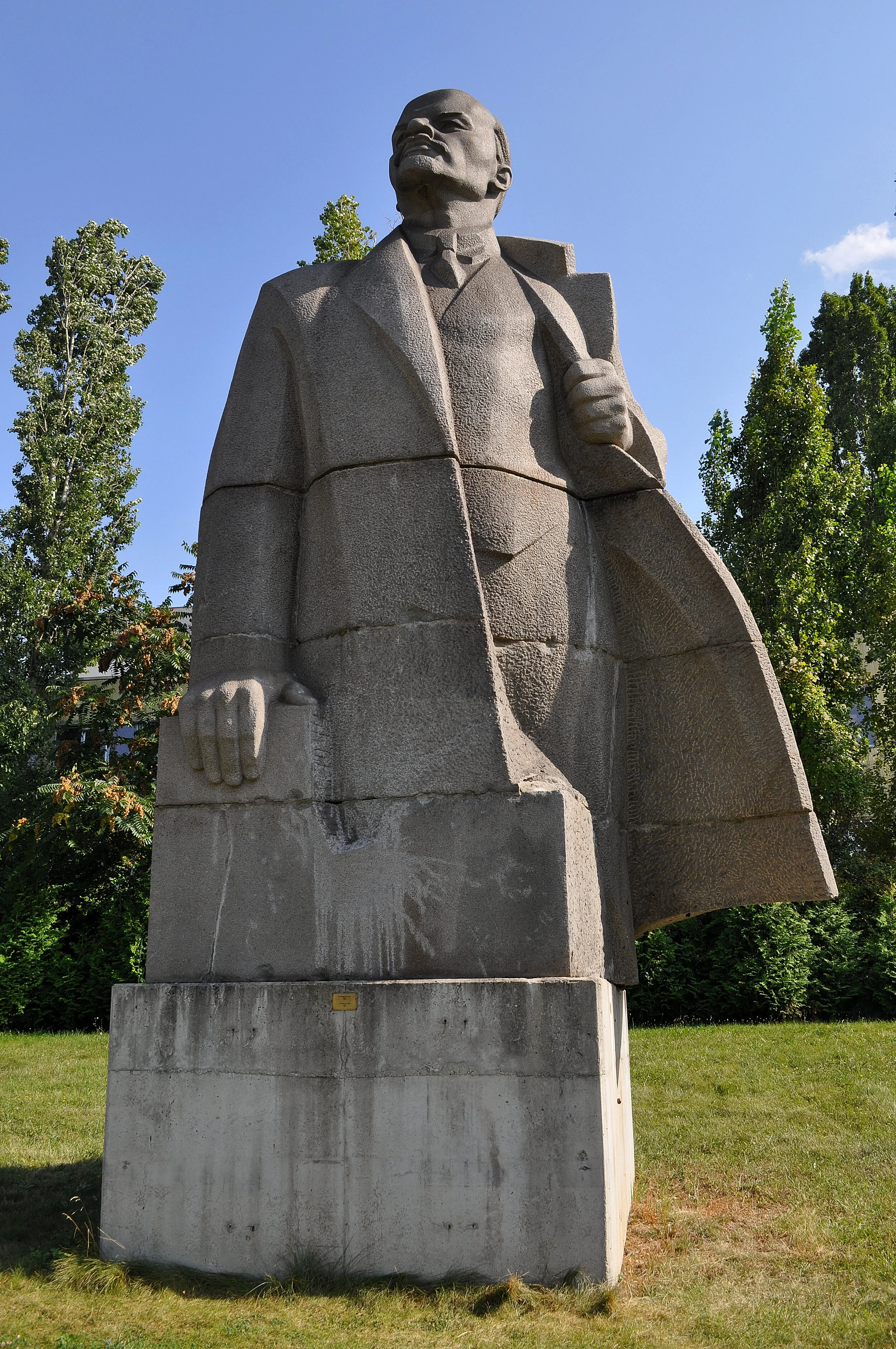Discovering Sofia
Piero: The next morning we set off after a good breakfast at one of the many bars near the boulevard.
Angela: Where are we heading today?
Piero: A full day ahead, with a complete tour of the city: lots to see, all close together. It’s a demanding walk but doable; just choose the right shoes!
Angela: We take the metro to Borisova Gradina Park, the oldest and most famous park in the Bulgarian capital, where the Levski Stadium is located. No chance to visit it, but it’s worth taking a stroll in the park.
Piero: Nearby is the beautiful Eagles' Bridge crossing the Perlovska River. It’s named after the four bronze eagles perched atop four obelisks.
Angela: The bridge commemorates Bulgarian citizens sent into exile, and some of the most significant historical political events took place here. It’s considered the gateway to the city.
Piero: From the bridge begins one of the city’s most important avenues, that of the Liberator Tsar, Alexander II. From here, we head back toward the city center.
Angela: On the left side of the avenue, opposite the University, is Knyazheska Garden, where our attention is drawn to a large obelisk: it’s the Red Army Monument, depicting a Soviet soldier “escorting” a woman and a man toward communism.
Piero: Now we turn right onto Vasil Levski Boulevard where we can admire, in order, the University buildings, the Saints Cyril and Methodius Library, and the National Gallery.
Angela: Now we get ready for a marvel! The symbol of Sofia, the most monumental church in Bulgaria and the second largest Orthodox church in the Balkans after the one in Belgrade: the Alexander Nevsky Cathedral.
Piero: Built in Byzantine style in the 19th century and dedicated to the Russian soldiers who died to liberate Bulgaria from Ottoman rule. Initially dedicated to Saints Cyril and Methodius, it was later named in honor of the Russian hero and warrior saint, Nevsky.
Angela: Majestic and imposing, with a series of domes covered externally with gold leaf, probably the back of the cathedral is the most admired and photographed part.
Piero: The magnificence of the exterior is not matched inside, which is dark and atmospheric like many Orthodox churches. Despite its size, it conveys a strong sense of spirituality. The altars, marble, stained glass, and all the decorative elements—often made of precious materials—are truly worth admiring.
Angela: But be careful: photos are not allowed without purchasing a special ticket!
Piero: In front of the cathedral, the large square hosts the lion statue, symbol of Bulgaria, the Church of Saint Sophia, the second oldest church in Sofia, and the Tomb of the Unknown Soldier.
Angela: Just a little further, in the square’s garden, don’t miss the flea market, where you can find Orthodox icons and relics from the communist period.
Piero: Nearby is the splendid Russian Church of St. Nicholas. Built in typical Russian style, it features onion-shaped domes decorated in green and gold, white façades, and the main entrance pediment adorned with majolica tiles.
Angela: Just a few more steps and we reach the political heart of Sofia. Walking along Dondukov Boulevard from the Russian Church, we arrive at the square that houses the buildings of the Parliament, the Presidential Palace—where you can witness the changing of the guard—and the National Bank of Bulgaria.
Piero: In the center of the square, a fountain with its beautiful water displays stands right in front of the National Archaeological Museum.
Angela: Surrounded by the Presidential Palace is the oldest monument in the Bulgarian capital: the Church of Saint George. It’s an early Christian church built of red bricks and decorated with frescoes inside. Here too, the most beautiful and iconic view is of the rear of the church.
Piero: We’re now in the very heart of Sofia. Not far from here, you’ll come across the Roman ruins of ancient Serdica—the Roman name of the Bulgarian capital. The construction of the metro recently uncovered these wonderful remains of the city’s former glory.
Angela: After walking through the ruins, you reach the Banya Bashi Mosque, and from there, Nedelya Square, where you’ll find another major symbol of Sofia: the statue of Saint Sofia.
Piero: It stands where the statue of Lenin once was, rising on a 15-meter bronze column. Just behind it is the Catholic Church of Saint Joseph.
Angela: Within just a few hundred meters, you’ll find a Catholic church, a mosque, an Orthodox church, and—as we’ll soon see—a synagogue. This is a clear symbol of the city’s religious tolerance.
Piero: After an intense morning, it’s time for a lunch break. Six kilometers of walking—definitely demanding, but in short stretches, since there’s so much to see!
Angela: What’s next for the afternoon?
Piero: To unwind a bit, we take a stroll through the Jewish Market—Tsentralni Hali—with its iron structure and clock tower, just across from Sofia’s Great Synagogue, which we’ll visit right after.
Angela: It’s the largest synagogue in Southeastern Europe. Imposing from the outside, it’s worth visiting inside to admire the grand central chandelier and the beautiful mosaic that decorates the floor.
Piero: At this point, we hop on the metro to reach the Museum of Communism.
Angela: We get off at Dimitrov station on the red line and walk a few hundred meters. The museum is easy to spot thanks to the statues and the red star at the entrance.
Piero: Sofia made a clear decision regarding its communist past: instead of destroying all its symbols, the city chose to collect and preserve them in this space.
Angela: The museum features an indoor section with paintings, sculptures, and posters from party congresses, while speeches by former heads of state play in the background, recreating the atmosphere of the era.
Piero: But the most fascinating part is the outdoor section, filled with monumental socialist sculptures. Among them, you’ll find the imposing statue of Lenin, which has recently been replaced by the statue of Saint Sofia.
Angela: At this point, we head back, again by metro, arriving at Serdica station, from where we reach the Church of Saint Nedelya (Saint Sunday), the oldest Orthodox church in Sofia and the most important until the construction of the Alexander Nevsky Cathedral.
Piero: Tired by now, we head home to rest and get ready for dinner.
Angela: Tonight we’re trying Manastirska Magernitsa, another traditional Bulgarian restaurant—maybe less elegant than Moma, but just as delicious.
Piero: Now off to bed, because it’s been a long day and tomorrow we’ve got two special surprises just outside Sofia: the Boyana Church and the Rila Monastery!
Angela: We walked nine kilometers today... tiring, but absolutely worth it!

